Utility Task Vehicles (UTVs) have grown in popularity over recent years, and for many owners, they’ve become a must-have for both work and recreation.
Like any vehicle, a UTV requires regular maintenance to stay in top shape. However, there’s often a debate among enthusiasts about when you can take on a DIY approach and when it’s time to call in the professionals.
This article breaks down the ins and outs of UTV maintenance, highlighting which tasks can be easily accomplished by an owner and which ones are best left to the pros.
DIY Basics: Regular Checks
Oil & Fluids:
How Often: Check monthly or after every 100 miles, whichever comes first.
DIY Potential: High. Like a car, Polaris UTV parts require oil changes to keep their engines running smoothly. The process is relatively straightforward, making it suitable for DIY.
Air Filter
How Often: Every 50 hours of use.
DIY Potential: High. The air filter prevents debris and dirt from entering the engine. A clean filter ensures better performance and fuel efficiency. Replacing or cleaning the air filter is generally a simple task.
Tire Pressure
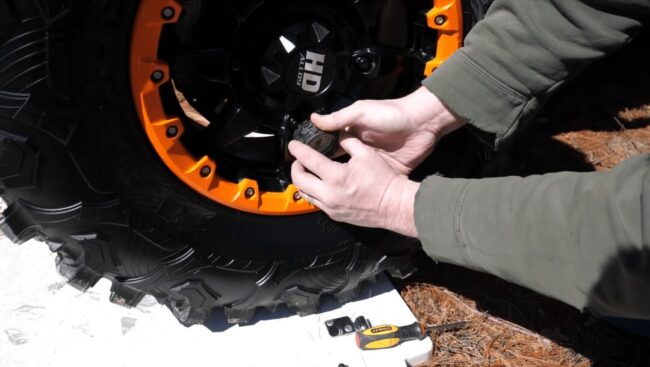
How Often: Before every ride.
DIY Potential: High. Ensuring proper tire pressure can significantly impact the UTV’s performance and safety. With a good pressure gauge, this is an easy DIY task.
Brake Pads
How Often: Every 500 miles or if you notice reduced braking efficiency.
DIY Potential: Moderate. While inspecting brake pads is straightforward, replacing them requires some technical know-how. If you’re mechanically inclined, it’s doable. Otherwise, consider professional help.
Periodic Deep Maintenance
Transmission Fluid
How Often: Every 500-1,000 miles.
DIY Potential: Moderate. Changing transmission fluid is a tad more complex than an oil change but can be done with proper guidance and tools.
Coolant
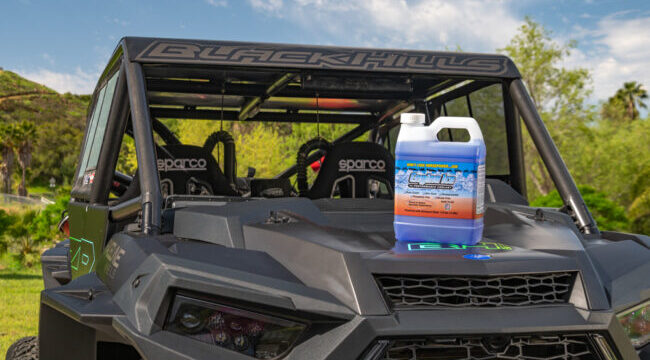
How Often: Yearly or every 1,000 miles.
DIY Potential: High. Changing coolant is relatively easy. Just make sure you choose the right coolant for your UTV model.
Spark Plugs:
How Often: Every 1,000 miles or when engine performance drops.
DIY Potential: Moderate. Replacing spark plugs can be managed by those familiar with engines. However, if you’re unsure, consult the owner’s manual or watch a few tutorials.
Cleanliness is Next to UTV Godliness
Exterior and Interior Cleaning
How Often: After muddy or dusty rides.
DIY Potential: High. Cleaning your UTV is not just for aesthetics. It ensures longevity by preventing corrosion and wear. Use a gentle detergent and avoid power washing sensitive areas.
Chain and Sprocket:
How Often: Every 200 miles.
DIY Potential: High. If your UTV has a chain drive, keep it clean and well-lubricated. It will significantly reduce wear and tear.
The Complicated Stuff: When to Call a Pro
Suspension Adjustments:
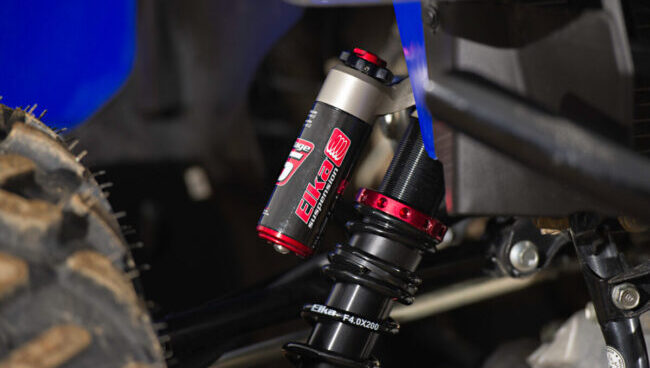
DIY Potential: Low. Unless you’re experienced, adjusting the suspension for optimal ride and handling can be complex. Mistakes could lead to unsafe riding conditions.
Engine Overhauls:
DIY Potential: Low. If your UTV requires engine repairs beyond basic maintenance, it’s best to consult a professional. They have the necessary tools and expertise.
Electrical Issues
DIY Potential: Low. Diagnosing and fixing electrical problems require specific knowledge. Incorrect handling can lead to further complications or safety risks.
Fuel System Repairs:
DIY Potential: Low. Fuel system components, like fuel injectors, require expertise to handle and replace.
Essential DIY Maintenance Tips
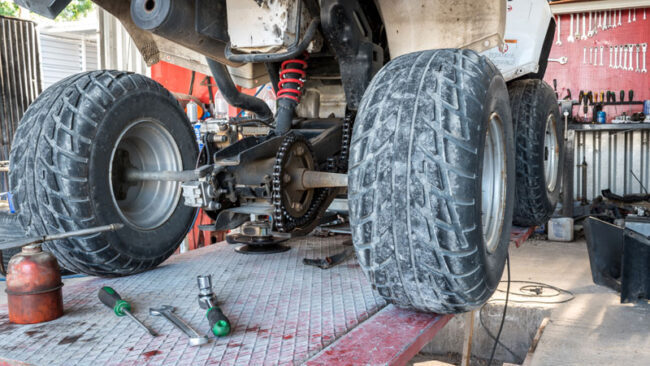
Stay Informed: Always refer to the owner’s manual. It contains model-specific guidance that can be invaluable.
Invest in Good Tools: Quality tools can make a difference in how effectively and safely you can perform maintenance tasks.
Educate Yourself: Before attempting a new maintenance task, watch tutorials or attend workshops. Knowledge will empower your DIY endeavors.
Safety First: Always ensure your UTV is on stable ground, preferably using jacks or stands. Disconnect the battery during major maintenance and always wear protective gear.
The Pro’s Touch
Sometimes, it’s worth having a professional look at your UTV, even if you believe everything’s in order. Professionals can:
- Spot issues before they become major problems.
- Ensure your UTV is optimized for performance.
- Offer peace of mind by double-checking your DIY work.
Regular Inspections: The DIY Checklist
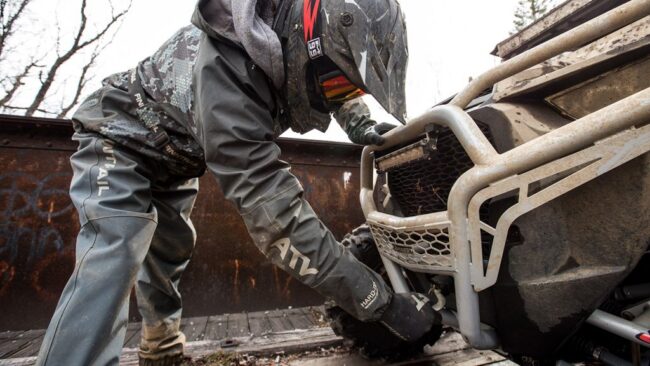
Before you head out for a ride, it’s good practice to perform a brief inspection of your UTV. Here’s a simple checklist:
- Lights: Ensure all headlights, taillights, and indicators are functioning correctly.
- Belts and Hoses: Look for any signs of wear, cracks, or breaks. These might indicate a need for replacement soon.
- Leaks: Check the ground where your UTV is parked and around the engine for any unusual leaks.
- Horn: Test to ensure it’s working correctly.
- Battery: Check battery terminals for corrosion. A simple cleaning can often resolve minor starting issues.
DIY: When It Makes Financial Sense
While there’s a sense of accomplishment that comes from maintaining your UTV, it’s also worth considering the financial aspect. Here’s when DIY can be economically beneficial:
- Labor Costs: Many maintenance tasks primarily charge for labor. By doing it yourself, you can save a significant amount.
- Customization: If you’re looking to customize or upgrade parts, doing it yourself can be cheaper than professional installation.
- Preventive Maintenance: Regular DIY checks can prevent expensive breakdowns in the future.
However, remember that incorrect DIY fixes can lead to more significant problems down the line, negating any initial savings.
The Right Environment for DIY
Having the right workspace can make your DIY efforts much more efficient. Ideally, you should have:
- Adequate Lighting: Good visibility is crucial.
- Shelter: Working under a roof can protect both you and the UTV from adverse weather conditions.
- Organized Tools: Keep your tools neatly arranged. This not only speeds up tasks but also ensures safety.
- Clean Workspace: Regularly clean up oil spills, debris, and ensure the floor is free from potential tripping hazards.
Building a Maintenance Community
One often overlooked aspect of DIY is the sense of community. Here are some ways you can tap into or foster a UTV maintenance community:
- Forums and Online Groups: These platforms offer a wealth of knowledge. Experienced members often share tips, tutorials, and advice with newcomers.
- Local Workshops: Some communities or dealerships offer workshops where UTV enthusiasts can learn maintenance skills.
- DIY Groups: Consider starting or joining a local group where members help each other out with maintenance tasks. This way, you can pool resources, tools, and expertise.
Final Words
While the DIY spirit is commendable and can save money, it’s essential to recognize your limits. Knowing when to call in a professional can be just as vital as performing regular maintenance. Whether you’re a DIY enthusiast or prefer a hands-off approach, understanding your UTV’s needs will ensure it serves you well for years to come.
Owning a UTV is a rewarding experience, made even more so when you can take an active role in its upkeep. While the DIY route offers personal and financial rewards, it’s essential to balance enthusiasm with pragmatism.
Recognizing when a professional’s touch is needed will ensure your UTV remains in top shape, ready to face any adventure or task you throw its way. As you grow in confidence and skill, you’ll find that the line between what you can handle and what requires a pro becomes increasingly clear. Until then, happy riding and wrenching!
